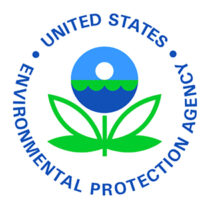WASHINGTON (Oct. 9, 2022) – Today, the U.S. Environmental Protection Agency (EPA) announced a new effort under the Toxic Substances Control Act (TSCA) to implement a streamlined and efficient process under the New Chemicals Program to assess risk and apply mitigation measures, as appropriate, for new chemicals with applications in batteries, electric vehicles, semiconductors and renewable energy generation.
Under TSCA, EPA’s New Chemicals Program plays an important role by reviewing all new chemical substances before they enter the marketplace in order to bring innovative chemistries to market in a way that does not harm human health or the environment.
“From job creation to energy security – clean energy sectors will power the future of our country,†said Assistant Administrator for the Office of Chemical Safety and Pollution Prevention Michal Freedhoff. “Streamlining our review of new chemical substances that make up electric vehicle batteries and that can be used in other vital emerging markets will allow manufacturers to super-charge production, bolstering our economy and advancing the Biden-Harris Administration’s goals to protect the environment and combat the climate crisis.â€
The new process is for mixed metal oxides (MMOs), including new and modified cathode active materials (CAMs). MMOs are innovative chemistries and have numerous electrical applications in batteries as well as use as catalysts, adsorbents, and in ceramics. Notably, MMOs, including CAMs, are a key component in lithium-ion batteries used in electric vehicles, which are a growing and important industry. New MMOs can also be used for semi-conductors, and renewable energy generation and storage, such as solar cells and wind power turbines. They typically consist of lithium, nickel, cobalt and other metals, and they are the key material used in the production of the cathode in battery cells, which are subsequently assembled into a battery.
This effort supports President Biden’s bold agenda to tackle the climate crisis, and will complement the resources flowing to EPA from historic legislation signed by the President. There are incentives attached to clean energy under the Inflation Reduction Act, including tax credits for electric vehicles. Under the Bipartisan Infrastructure Law, there are also incentives to build a national network of electric vehicle chargers.
Like all chemical substances not listed on the TSCA Inventory, MMOs, including new and modified CAMs, are subject to section 5 of TSCA, which requires manufacturers (including importers) of new chemical substances to provide EPA with notice before initiating the activity by submitting a Premanufacture Notice (PMN). When EPA receives a PMN, TSCA requires the agency to fully assess all the potential hazards and exposures of the new chemical substance, make a determination as to whether it presents an unreasonable risk to human health or the environment, and take steps to address that risk before it can enter commerce
EPA has reviewed hundreds of TSCA section 5 submissions for MMOs, including CAMs and modified CAMs, since the 1980’s. To further describe this new effort, EPA will launch outreach and training for interested stakeholders to outline the new streamlined approach to reviewing MMOs, basics of TSCA statutory and regulatory requirements, and steps for navigating the new chemicals submission process.





